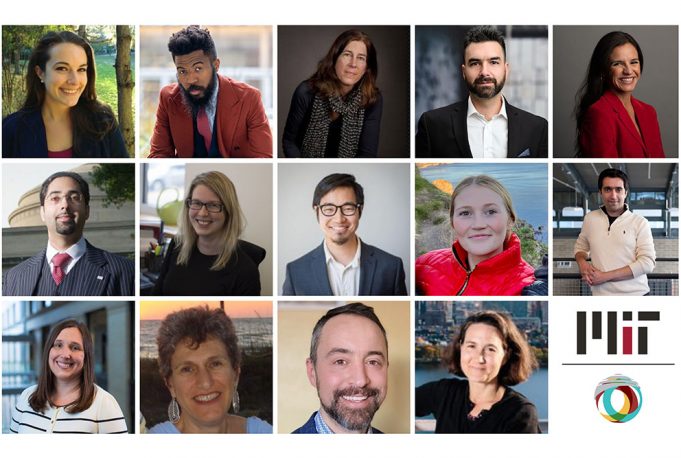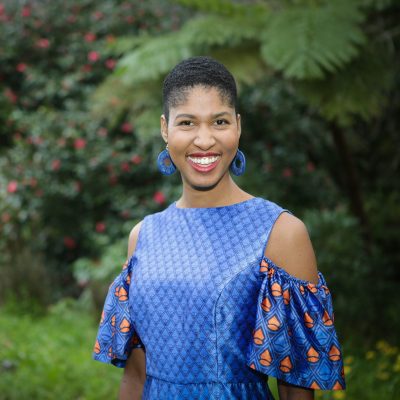
MIT researchers win grants to develop and test 14 innovative ideas to improve education
The MIT Jameel World Education Lab has awarded $917,526 in Education Innovation Grants to support 14 research projects exploring a range of topics, including electrical engineering, extended reality, physical movement, and ecological sustainability. The grants will support researchers from 11 departments, labs, and centers across MIT.
“Our Education Innovation Grants support MIT research that can improve learning everywhere,” says Anjali Sastry, faculty director of the Jameel World Education Lab. “We share ideas, disseminate emerging findings, and collaborate with innovators who join us to lead global change in education. Educators in dozens of countries will learn from this year’s inspiring efforts to tackle core challenges in education with innovative new methods and means. Through light-up sneakers, glassblowing, and autonomous vehicles, grantees are enabling learning from curriculum-linked real-world projects, prototyping effective ways to embed evidence-based insights and research into the design of learning experiences, and enabling transitional learners to benefit from high-quality education.”
Since 2017, the Jameel World Education Lab, part of MIT Open Learning, has awarded more than $5 million in funding to MIT researchers for projects to address teaching and learning across the life cycle, from pK-12 to higher education to workforce learning. Over the years, grants have supported educational innovations across a rich variety of MIT fields: mechanical engineering, literature, architecture, computer science and artificial intelligence, aeronautics and astronautics, management, physics, and more.
“We are energized by the breadth and scope of topics from this year’s grantees,” adds Maria Segala, data, reporting, and grants administrator for the Jameel World Education Lab. “We look forward to connecting the innovative work of our grantees to the broader MIT community, Jameel World Education Lab member organizations, and educators and learners around the world.”
The 2023 Education Innovation Grant researchers and their projects are:
“An online platform for explaining, promoting, and facilitating embodied education at MIT and beyond” — Jennifer Light, the Bern Dibner Professor of the History of Science and Technology and professor in the Department of Urban Studies and Planning
Light’s work on embodied education aims to close the gap between the growing body of research on movement and the learning process and the pedagogical strategies that educators use. Light seeks to find ways to help schools integrate physical activity and academic instruction at all levels — for example, teaching elementary school geometry through yoga, middle school physics through martial arts, and high school history through dance.
“Making implicit knowledge explicit: tacit knowledge transfer from expert glassblowing instructors to less-experienced students at the MIT Glass Lab” — Andrés Felipe Salazar-Gomez, research scientist at MIT Open Learning; and Sanjay Sarma, the Fred Fort Flowers and Daniel Fort Flowers Professor of Mechanical Engineering
Implicit knowledge is know-how that an expert is usually unable to verbalize, codify, or explicitly transfer to others. Salazar-Gomez and Sarma seek to understand representations of tacit knowledge using overt and covert attention signatures in a mentor/apprentice setting. This study will use scene point-of-view videos, eye tracking, and detailed instructions from glassblowing experts to naïve learners to create instructional resources that will be offered as novel instructional material.
“Games for climate education: developing game-based facilitation of the En-ROADS climate simulator” — Lana Cook, associate director of the MIT Systems Awareness Lab; and Eric Klopfer, director of the MIT Scheller Teacher Education Program and head of MIT Comparative Media Studies/Writing
Climate Interactive’s innovative climate change simulator En-ROADS has been very successful in engaging participants to think about the impact of alternative policies and actions to mitigate and reverse the effects of climate destruction. Yet, meaningful shifts in understanding, policy, and action require education and understanding at massively greater scales than are currently possible with the En-ROADS facilitation model. Cook and Klopfer seek to explore game-based facilitation.
“Minor notes: teaching the archival arts” — Joshua Bennett, Distinguished Chair of the Humanities and professor in MIT Literature
“Minor notes” addresses current gaps in K-12 literary arts education through a novel approach that combines archival research with collaborative art-making. Bennett plans to meet with a cohort of high school seniors and their faculty advisors to explore local community archives and compose original works of art inspired by the historical materials they discover in those spaces.
“Promoting creative learning through Festivals of Invention and Creativity: building on a successful model from Brazil” — Ann Berger Valente, educational research manager at the MIT Media Lab; and Leo Burd, director of the Lemann Creative Learning Program at the Media Lab
As part of its Brazilian Creative Learning Network program, MIT Media Lab’s Lifelong Kindergarten group plans to develop a set of resources and guides to deepen and broaden the reach of creative learning experiences through Festivals of Invention and Creativity in countries around the world. Valente and Burd will gather input and feedback during the development process from educators in Brazil, Chile, Mexico, South Africa, and other countries to iteratively refine the resources.
“ODDS & MODS: Material circularity prototypes for rural communities” — Sheila Kennedy, chair of MIT Master of Science in Architecture Studies programs and professor in the Department of Architecture; and Caitlin Mueller, director of MIT Digital Structures Lab and associate professor in the Department of Architecture
Kennedy and Mueller aim to foster practical learning by engaging students in circular material economies through project-based research and demonstrations. The integrated curriculum will explore material circularity in architecture, empowering students to drive decarbonization and lead transformative changes in design and construction practices while utilizing innovative materials and reducing environmental impact.
“Climate and Environmental Justice (CEJ) inclusion: exploring CEJ teaching practices across departments, labs, or centers at MIT” — Christopher Rabe, postdoc of environmental and sustainability education with the MIT Environmental Solutions Initiative; and John Fernández, director of the MIT Environmental Solutions Initiative and professor of building technology in the Department of Architecture
Higher education institutions — including MIT — lack a full integration of CEJ into its environmental and sustainability programs. This exclusion leads to underrepresented students, including Black, Indigenous, and people of color (BIPOC) individuals, feeling discrimination and isolation within these programs. To truly address global climate justice, it is crucial for higher education to understand how CEJ is taught and its impact on BIPOC students’ sense of belonging.
“Strengthening biomedical education curriculum in East Africa to incorporate hands-on learning and innovation” — Nevan Clancy Hanumara, research scientist in the Department of Mechanical Engineering; Alexander Slocum, the Walter M. May (1939) and A. Hazel May Chair in Emerging Technologies in the Department of Mechanical Engineering
While the scarcity of medical equipment in much of Africa is recognized, little attention has been given to local biomedical engineers who aspire to be innovators and develop context-appropriate medical devices. Hanumara and Slocum propose to create a scalable innovation module framework designed for East African biomedical students, based on the course 2.75/2.750 (Medical Device Design).
“MICRO 2.0: Cultivating students’ STEM identities through a blended learning research and education program” — Jessica G. Sandland, principal lecturer in the Department of Materials Science and Engineering and digital learning scientist in MIT Open Learning
Building on the success of Materials Initiative for Comprehensive Research Opportunity (MICRO), a program providing research opportunities to underrepresented undergraduate students, Sandland proposes MICRO 2.0: a blended program that combines online research, mentorship, workshops, and campus visits to foster participants’ identities as STEM researchers and members of the materials science and engineering community. The program also seeks to address the underrepresentation of certain BIPOC groups in U.S. engineering doctoral programs.
“A climate toolkit for design thinking” — Aisling O’Grady, project manager at the MIT Energy Initiative; and Christopher R. Knittel, the George P. Shultz Professor and professor of applied economics in the MIT Sloan School of Management
A 2016 Science Magazine article revealed a disconnect between climate science progress and education resources, resulting in limited teacher time and awareness about climate change consensus. This lack of education hampers global youth engagement in climate solutions, which underscores the need to bridge the academic-societal climate education gap. O’Grady and Knittel propose creating a toolkit that focuses on impactful, student-centered climate education to support these efforts.
“Partnering with an Indigenous tribe to bring a successful STEM program for creating autonomous vehicles to the middle-school level” — Sertac Karaman, professor in the Department of Aeronautics and Astronautics
The Department of Aeronautics and Astronautics’ Design, Build, Fly model aircraft curriculum aims to teach essential engineering concepts through model airplanes, catering to underserved and under-resourced students. By adapting the program for younger middle school students lacking certain mathematical skills, Karaman proposes to provide kits and materials for learning aerodynamics, designing, building, and testing, fostering STEM interest from an early age.
“Studying educators’ practices in makerspaces to build a curriculum for maker skill learning” — Stefanie Mueller, the TIBCO Career Development Associate Professor in the Department of Electrical Engineering and Computer Science and head of the Human-Computer Engineering Group at the Computer Science and Artificial Intelligence Laboratory
Existing research into makerspaces mainly focuses on students’ experiences, neglecting educators’ perspectives. Mueller proposes that understanding educators’ viewpoints can guide the development of better educational tools and approaches, while studying diverse makerspaces across contexts can provide insights into effective practices.
“Light up kicks: engaging youth in shoe design using culturally sustainable pedagogy” — Cristina Sáenz, invention education manager at the Lemelson-MIT Program; and Michael Cima, the David H. Koch (1962) Professor of Engineering in the Department of Materials Science and Engineering and faculty director of the Lemelson-MIT Program
Lemelson-MIT researchers plan to create an inventive curriculum for elementary students between 9 and 11 years old, centered on building a prototype shoe with lights. The curriculum addresses waning interest in STEM among young learners, focusing on diversity and multiculturalism to engage students from different backgrounds in the innovation process. Ultimately, this curriculum aims to boost diversity in the innovation ecosystem.
“Developing an ACT-R and error-based cognitive architecture for the development of virtual reality hands-on training” — John Liu, lecturer in the Department of Mechanical Engineering and digital learning scientist at MIT Open Learning
Hands-on manufacturing skills are crucial for success in today’s technology-driven world, but the rapid advancement of manufacturing technology creates a gap between industry needs and workforce training. Liu proposes that extended reality offers a promising approach due to its scalability and personalized feedback potential, particularly for non-traditional education pathways.

